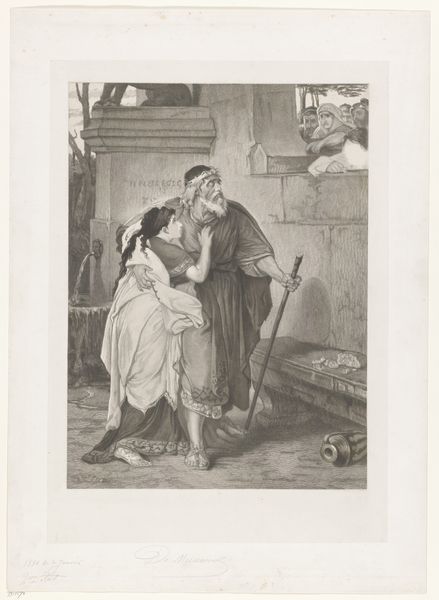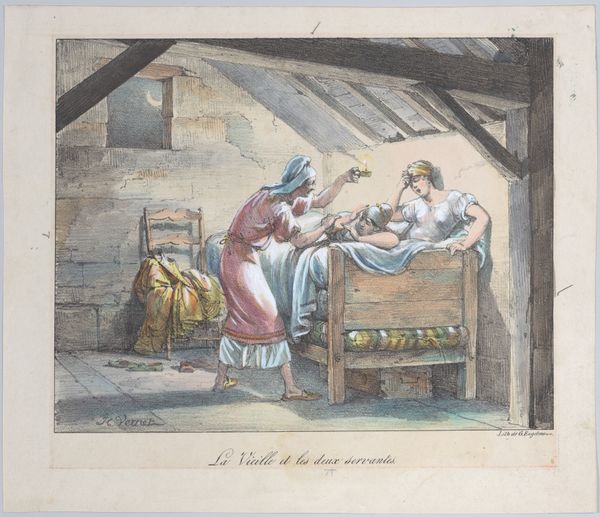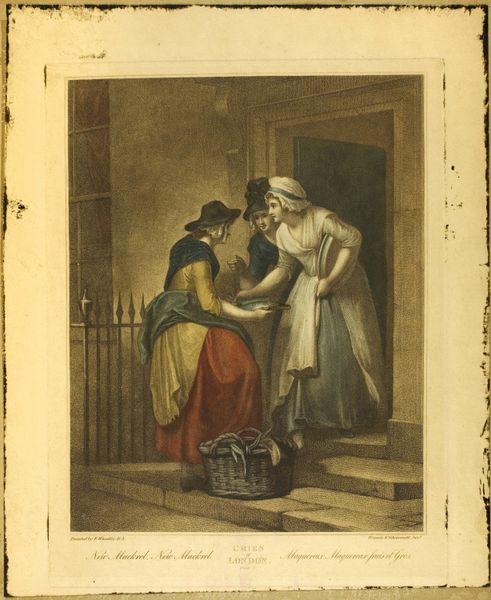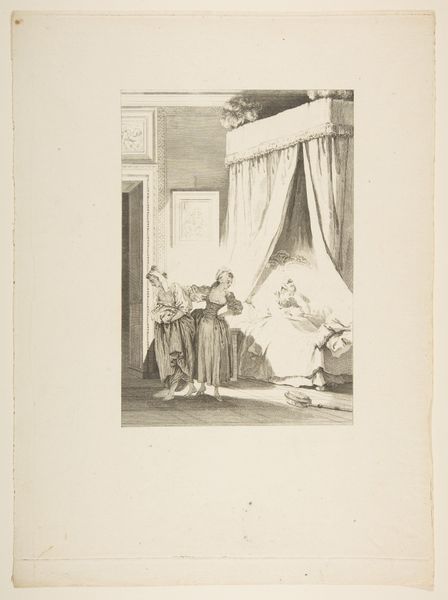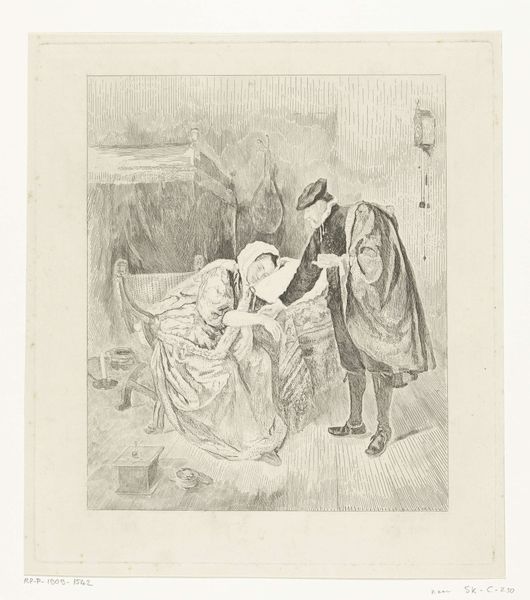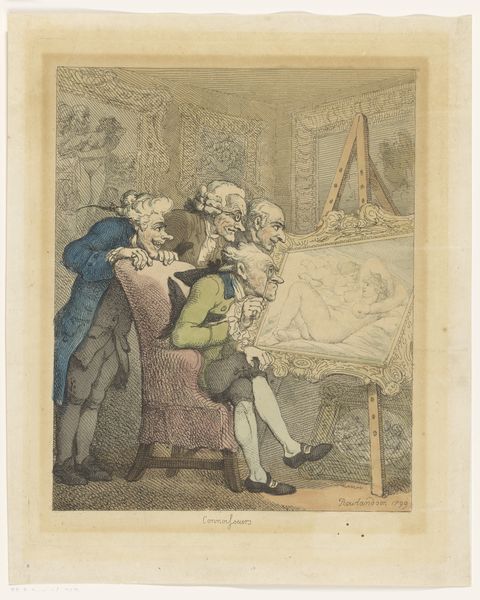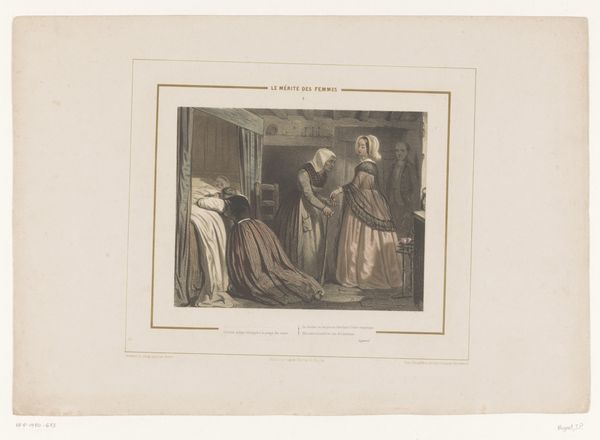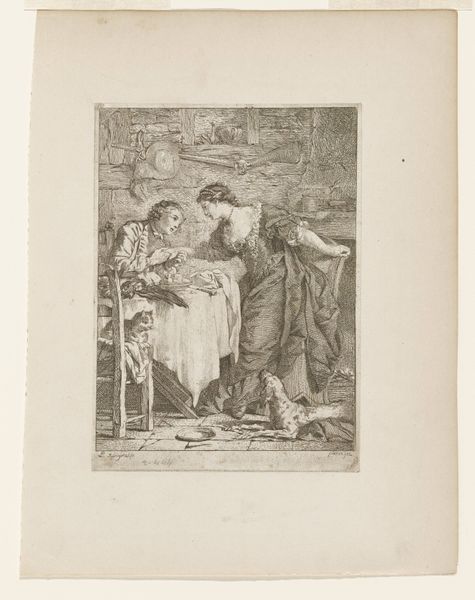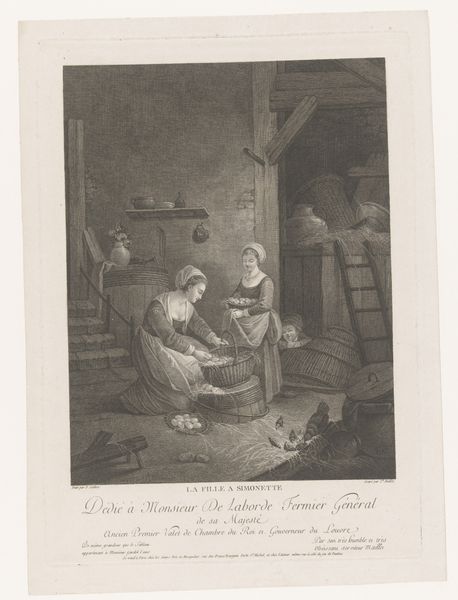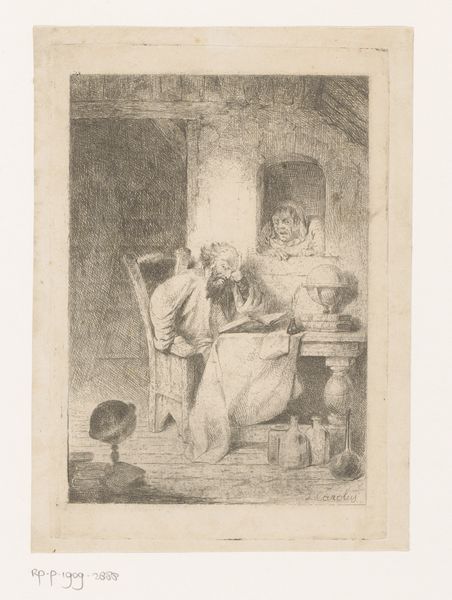
print, engraving
#
narrative-art
# print
#
figuration
#
romanticism
#
genre-painting
#
history-painting
#
engraving
#
watercolor
Dimensions: 414 mm (height) x 298 mm (width) (plademaal), 346 mm (height) x 270 mm (width) (billedmaal)
Curator: This is “En falden piges biografi. Nr. 1” from 1811, an engraving by Gerhard Ludvig Lahde. The aquatint presents an emotionally charged interior scene. Editor: My initial reaction is one of unease. The somber color palette and stiff figuration amplify the drama, creating a heavy atmosphere. The off-kilter perspective adds to this sense of disquiet. Curator: Lahde uses a complex visual narrative, doesn't he? Consider the figures: A woman in distress, visibly pregnant, is confronted by an older, accusing woman, presumably her mother. The stark contrast in their postures is quite telling. One droops with shame while the other is rigidly accusatory. Editor: Precisely. The engraving powerfully portrays societal condemnation of unwed mothers during the Romantic era. Note how the fleeing male figure almost blends into the architectural frame. The focus here is explicitly on the woman's shame and her transgression. I wonder who he might represent. Curator: Indeed, this scene can be decoded using the semiotics of domestic drama. The fallen rose and discarded infant’s bonnet on the floor are not coincidental. The broken chair only seems to confirm her fall from grace, metaphorically as well as quite literally. The use of line, specifically in the characters' clothing, dictates a clear path from source to subject and back out the door with that last figure! Editor: Certainly. These details reinforce the tragedy. Lahde isn’t merely depicting a scene; he’s crafting a cautionary tale, reflecting broader social anxieties about female sexuality, family honor, and social order within patriarchal structures. The domestic space then becomes a battleground for morality. Curator: And consider the material nature of the engraving itself. It makes it a piece of social critique meant for wide circulation. Editor: This is why the historical context and contemporary feminist theories become essential tools for interpreting Lahde's intention and for acknowledging how those narratives reverberate into current conversations on gender roles and representation. Curator: Viewing the graphic weights—the use of dark line against the lighter washes—makes the message undeniable. The formal components all lead to the same thematic conclusions. Editor: It's remarkable how an ostensibly simple engraving encapsulates such complex layers of social commentary and gendered power dynamics. Curator: Indeed. The tight control and clean engraving offer quite a lasting resonance.
Comments
No comments
Be the first to comment and join the conversation on the ultimate creative platform.


